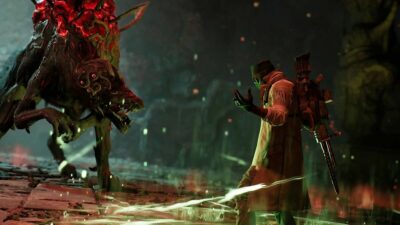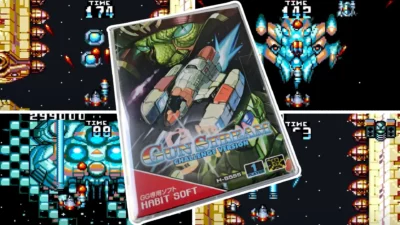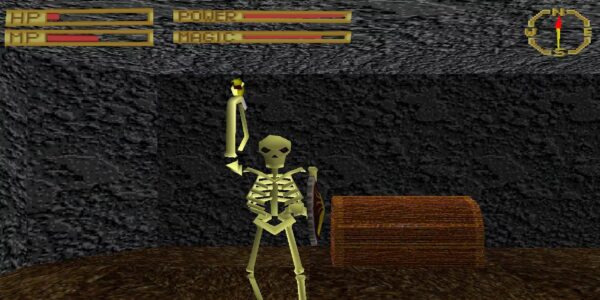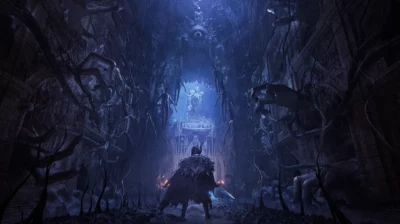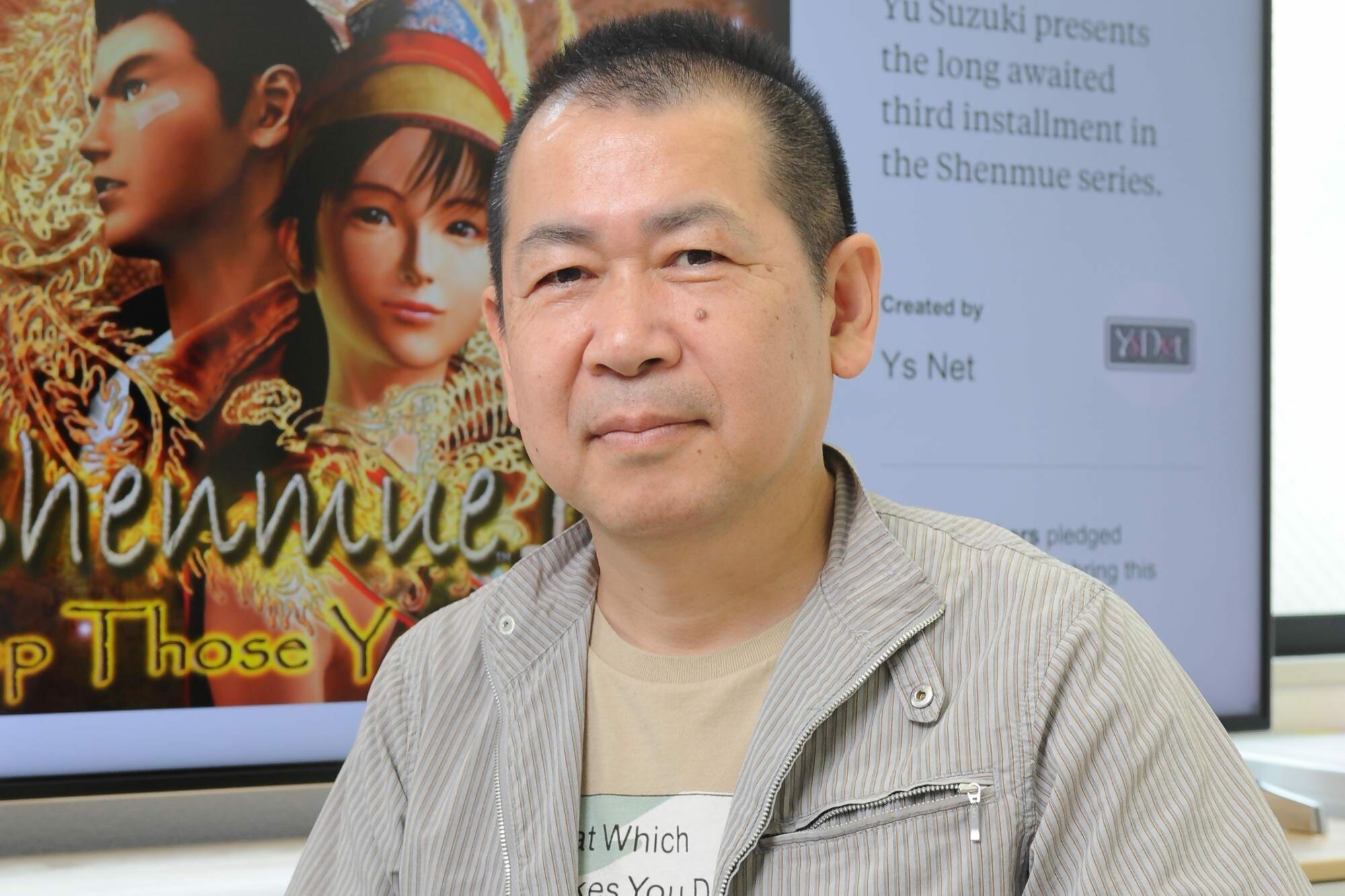
Designer Yu Suzuki’s games industry career has lasted so long, and his contributions are so numerous, that his name will mean different things to different readers. Some might associate him with his ‘Taikan’ – or ‘body sensation’ – arcade machines of the 1980s; others, his 3D fighting and racing games of the nineties; still others, the groundbreaking open-world sandbox trilogy, Shenmue, which finally got its concluding chapter in 2019.
It’s a testament to the strength of Suzuki’s ideas that so many of the games he developed at Sega are still talked about and played today. Although rooted in the arcade scene of the eighties, games such as OutRun and After Burner have appeared on successive generations of home systems; most recently, developer M2 has spent the past couple of years bringing several Suzuki-led titles to the Nintendo Switch. Suzuki’s impact on Sega’s history is such that his influence crept into games he had no direct hand in: look again at Sonic the Hedgehog, and you can see the same vibrant colours, blue skies, and pseudo-3D effects that lit up OutRun and Space Harrier.
Suzuki was in his mid-twenties when he joined Sega as a programmer in 1983, and his technical prowess was so keen that he made his mark almost right away. His fighting simulator Champion Boxing was one of the most impressive games developed for the company’s poorly received (and sorely underpowered) home console, the SG-1000. (Indeed, Suzuki’s superiors were so impressed by Champion Boxing that they swiftly turned it into an arcade machine – without changing a line of code.)

If the psychedelic fantasy backgrounds of Space Harrier look familiar, it’s because Suzuki took inspiration from British artist, Roger Dean. Dean’s work appeared on prog rock album covers, and the game boxes of UK studio, Psygnosis.
Thereafter, Suzuki’s ascent at Sega was swift. Not long after the completion of Champion Boxing, he began work on the seminal racer, Hang-On – the first in a series of arcade games that mixed pseudo-3D graphics and a custom cabinet that enhanced the player’s sense of immersion. In Hang-On’s case, this meant the player got to sit astride a replica motorcycle, which then had to be tilted left and right in order to tackle on-screen bends. Hang-On was a bold and quite ingenious amalgam of cutting-edge hardware and programming; its cabinet used two 16-bit processors to power the sprite scaling, which gave the game a sense of speed and realism that was, in the mid-eighties, unparalleled. “I started out as a programmer on the software side,” Suzuki told Gamasutra in 2011, “but by and large, we were making hardware for the express purpose of the games I and everyone else at Sega were working on.”
Released in 1985, Hang-On set the tempo for a run of thrilling arcade games that fused into-the-screen action and hydraulic arcade cabinets, each building on the last in terms of technical innovation. Space Harrier, also released in 1985, was a 3D shooter where the cabinet rocked and shifted in time with the player’s movements (albeit with an unavoidable lag that Suzuki lamented even years later); 1986’s OutRun simulated the fantasy of driving a Ferrari Testarossa; and 1987’s After Burner, with its fully enclosed, pod-like cabinet and booming speakers, put players right into the seat of a fighter jet.

OutRun’s sights, sounds, and eye-catching Ferrari arcade cabinet made it one of Sega’s biggest eighties successes.
Suzuki worked at a ferocious rate – often sleeping on a fold-out bed under his desk between long coding sessions – and it’s incredible to think that some of the most famous games of his career (many of which you’ll find on page 88) were released within months of one another. Beyond his desire to push the technical envelope, Suzuki evidently had another talent: gently coaxing his bosses at Sega into taking creative risks. When Suzuki took over the development of Space Harrier, Sega was nervous about making a 3D shooting game, since previous attempts at the genre had failed to turn a profit; according to programmer Satoshi Mifune, Suzuki convinced Sega to proceed with the project by offering to forgo his salary if Space Harrier failed to sell.

Unsurprisingly, Yu Suzuki and his team leaned heavily on the success of Tony Scott’s hit 1986 film, Top Gun, when it came up with the premise for After Burner.
Space Harrier was, naturally, a big hit, and so too were many of the subsequent games created by AM2, the division Suzuki set up within Sega during the second half of the 1980s.
At AM2, Suzuki began testing boundaries on a new front: Virtua Racing, released in 1992, was Sega’s first foray into polygonal 3D. Compared to other attempts at making true 3D racing games, it was a revelation; where
Atari’s Hard Drivin’ chugged along at a dismal pace, Virtua Racing actually felt akin to sitting at the helm of a dangerously quick Formula One car. Allied to another eye-catching, sit-down arcade cabinet, Virtua Racing was one of the pivotal games of its era, paving the way not only for a string of other titles in the Virtua series – Virtua Fighter, Virtua Cop – but a new wave of ever more detailed driving sims, including Suzuki’s own Daytona USA, released just one year after Virtua Racer.

Virtua Racing wasn’t the first 3D driving game of its type, but it was the first to prove that a polygonal racer could be as truly thrilling as a sprite-based one.
The sheer speed at which Suzuki directed, designed, or produced games in the eighties and nineties hints at a restless mind, always kicking against the limits of current technology and thinking ahead to what might be next. “Making more and more realistic games is the direction I want to go in,” Suzuki said in a 1988 interview translated by Shmuplations.com. “Games aren’t reality, of course, so you do need a lot of tricks and techniques to bring a sense of realism to a game. But to the extent possible, I still want to avoid doing things that seem to clash with reality and make the player go ‘That’s weird.’ A world that seems like it could really exist, where you can do things that seem like they’d really be possible – that’s what I’m aiming for.”
Suzuki built his reputation on making games that thrilled the senses, but plans for a slower-paced experience had loitered at the back of his mind, even in the mid-eighties. “I wanted to make a 3D adventure or role-playing-style game,” Suzuki told Japan’s Beep! magazine back in 1986, discussing the project he wanted to embark on after Hang-On. “But that would have taken too long to develop.”

Still innovating in the nineties, Suzuki produced and directed Virtua Fighter, the first fully 3D combat game of its type.
Suzuki finally got the chance to make his 3D adventure over a decade later, when he started work on an RPG for the Sega Saturn. Initially based on the Virtua Fighter games, the project was ambitious, even by Suzuki’s standards: it would feature an open 3D environment, a huge cast of characters, and a storyline which took place over dozens of hours. The project was eventually moved over to the Saturn’s successor, the Dreamcast, by which point it had shifted identities from Virtua Fighter RPG to Shenmue, and its scale had ballooned. “Thanks to all the voicework, the biggest struggle for us was the amount of memory,” Suzuki recalled in a 2000 interview. “We miscalculated there for sure… At first we said it would all fit one disc maybe, then two discs, then three… and we kept adding new things to the game, it was getting crazy.”
Shenmue finally emerged from its three-year development in 1999, and while it was a critical success, it wasn’t quite the blockbuster Sega had banked a reported $47 million on; certainly, neither it nor its sequel could reverse the Dreamcast’s dwindling fortunes. Shenmue II came out in September 2001, six months after Sega ceased production on the console. There was no doubt that the Shenmue games were truly innovative – it told a genre-bending, grandiose revenge saga released years before such things were common on consoles – but the games also marked the end of Suzuki’s most creative run at Sega. Several projects Suzuki worked on in the 2000s – among them Shenmue Online and an arcade fighting game called Psy-Phi – were cancelled during production as Sega’s finances declined.

Shenmue was a huge production for its time, with around 300 staff working on the game, often working evenings and weekends to get the thing finished.
Perhaps sensing that his tenure at Sega was almost up, Suzuki founded his own company, Ys Net, in 2008, and left Sega for good in 2011. It was under this banner that Suzuki finally made the third Shenmue game, released in 2019; but with a tighter budget and a smaller development team than its predecessors, Shenmue III didn’t make quite the same impact as those earlier games, even if its story did give fans the conclusion they’d been waiting almost two decades for. Although now in his sixties, Suzuki’s showing no signs of retiring just yet: earlier in 2020, he even suggested making a fourth Shenmue that would appeal to “a broader audience” in an interview with IGN Japan. It remains to be seen whether he can keep innovating to the extent that he did in the eighties and nineties, particularly as he no longer has the financial backing of Sega at the height of its powers. As he said in 1988: “If only I could create things without having to worry about the cost.” Whatever Suzuki does next, though, his contribution to gaming – as an innovator, a technical visionary, and a creator of ruddy good games – remains assured.


